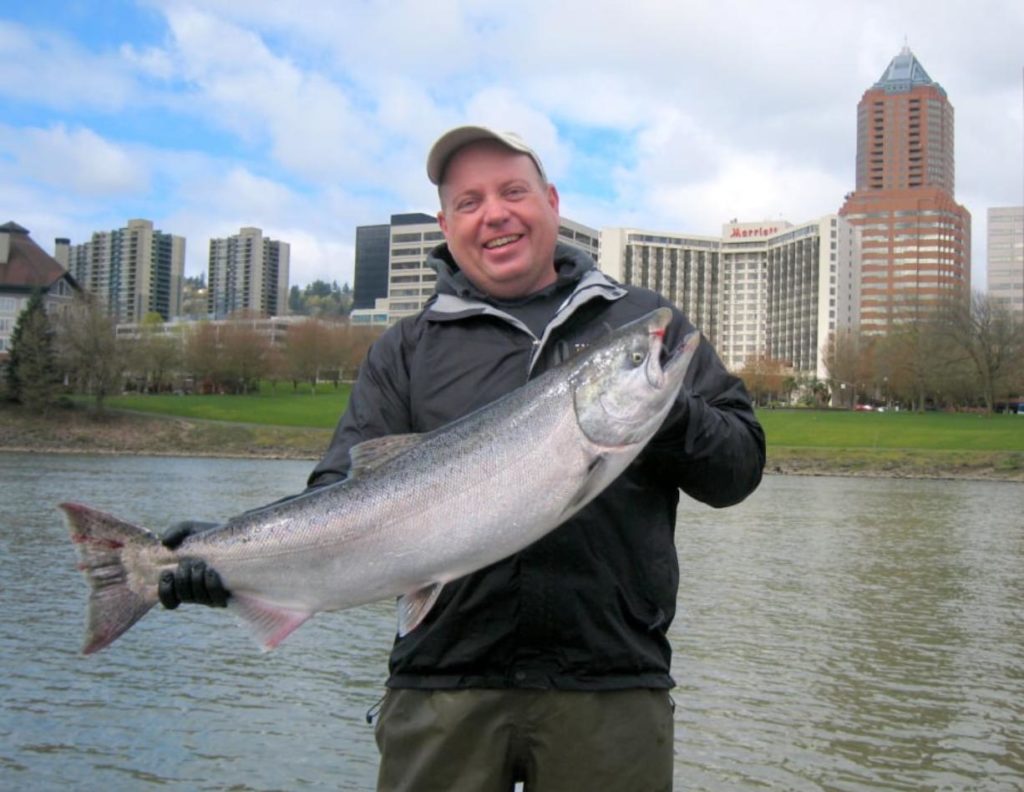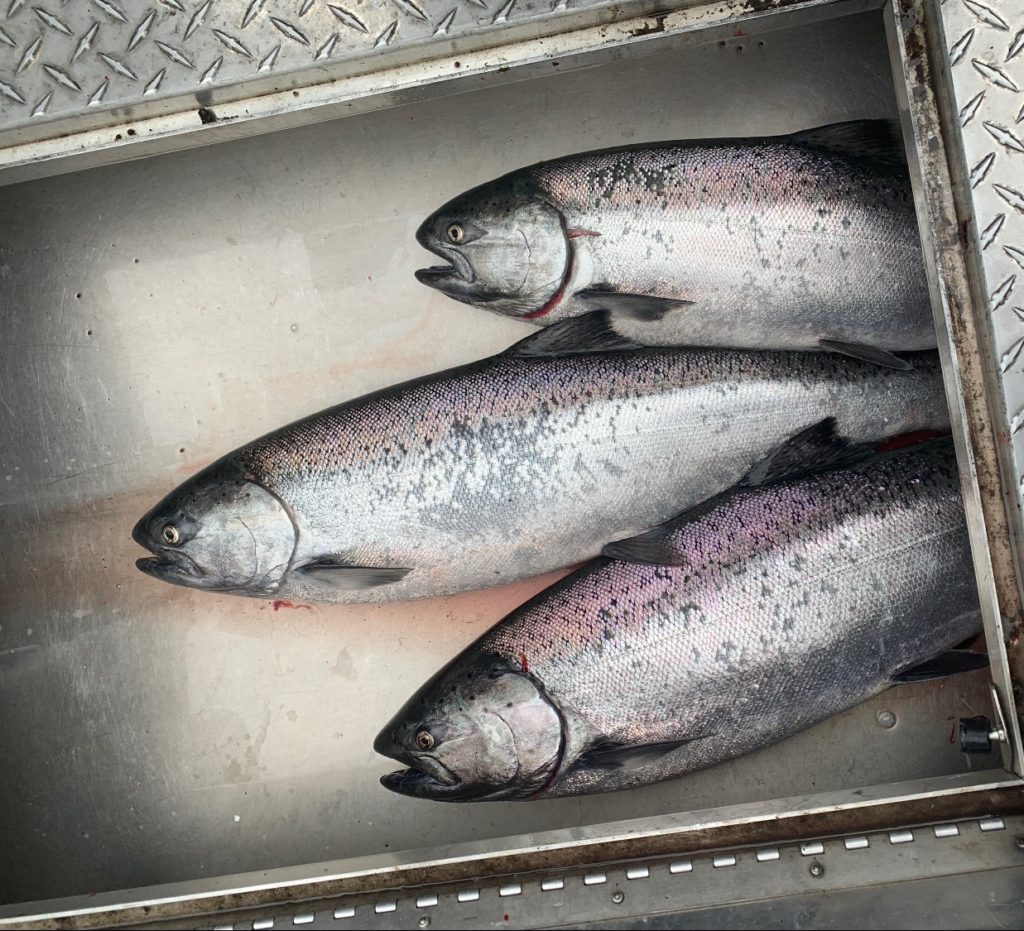It’s been a tough springer season so far. Some of you started early, trying to lay claim to the “first springer of the year”, others took advantage of an open Columbia and made March their month and even more of you waited until April. In all cases you found the fishing to be “spotty” at best.
For sure, there have been a few good days, much like last year. Some questioned whether or not guides should even be running trips on such a soft year but they did and their customers benefited from their expertise. And while it was never gang-busters it’s been good enough with the occasional fish making up for days of inactivity.
All this is a prelude to June.
For the past few years (several in fact) June and even the first half of July have been very good for catching chinook salmon (notice I didn’t say “springer”) in the lower-Willamette River.
It’s a troll fishery. The formula has been Pro Troll 360 flashers, 12 ounces of lead, 20’ on the line counters and 3.5 spinners. Boaters troll from the mouth of the Willamette up to the St. Johns Bridge (or so). Some prefer to stay close to the ships that are there for repair, some zig zag across the river and some make a big loop. It’s like lake trolling and it’s about as easy as it gets once you figure out the rigging and troll speed.
It’s also a “first light bite”, that is, get in the water at dark and expect to be off the water around 9AM.
Leader length between your flasher and spinner is a key feature to success. 26” to 30” seems to be the optimum length. I can’t overstate what a big deal this is. Guides will have measuring tapes in their boat (we do) so they get it right down to the inch preferring 28” to 26”.


The shorter your leader the more your spinner is affected by the action of the flasher. Too short and the flasher will spook the fish, too long and you won’t get much action out of your spinner.
No mention of bait?
That’s right, by the time this fishery is really producing the water temperature has warmed into the 60’s and chinook just don’t bite bait well. They will bite spoons. I like fishing Yakima Bait FST’s in red and white but copper is a good choice, 50/50 brass and nickel is another winner. These don’t get used much but they’re very effective. They were wildly popular 70 years ago but have been largely forgotten by everyone except the salmon.
I’ll fish both. That is, 3.5 spinners with 360 flashers on my forward rods (the ones closest to the bow) and spoons on the rear rods with triangle flashers (like a Yakima Bait Fish Flash).
Brad’s Super Baits and Yakima Bait Spin Fish work well too. Both of these lures have large scent chambers you can load with oil-packed tuna fish and run behind a 360 flasher.
Finding the right troll speed is the secret. If your 360 flashers are working then your triangle flashers are working too. The 360 flasher imparts a rhythmic, steady pulse where the rod’s pulsing in about ½ second to ¾ of a second intervals.
If there is no pulsing action then you’re going too slow or the lure you’re using is too big. I’ve learned the hard way on this one. I used a size 5 blade behind a 360 flasher and couldn’t, for the life of me, figure out why I couldn’t get it to work. I messed with leader length and boat speed but it just wouldn’t work. The friend I was fishing with had done the same thing and learned the same lesson — the lure was too big for the flasher.


Profile and flash are essential any time of year but especially in this fishery. Anyone who’s fished for shad has seen chinook hooked on those small Hildebrandt Flicker Spinners or trout-sized Dick Nite Spoons. I’ve enjoyed some incredible catching on small flashy lures, particularly when the water’s warmed up. It’s something about the smaller profile of these lures that gets and keeps the attention of chinook and silvers too.
Earlier in the season when the water’s cold, bigger baits are the ticket but as it warms up, scale down. That’s why those 3.0 and 3.5-sized spinners work so well.
Tom Mack and FST spoons break that rule because of their moderately-sized profile…they’re not small but they’re nothing like a K-16 Kwikfish or blue-label herring either.
I’m grateful to have not burned myself out in spending hours and hours of time chasing springers in January, February, March and April. For me, the best fishing of the year is now, from June into early July. This is the time to be out trolling and catching chinook. With a solid forecast of summer chinook expected and more than 30,000 springers yet to come into the Willamette there’s some very good fishing ahead.
The Columbia will predictably back-up the Willamette causing some of those summer chinook to stray into the Portland Harbor and throughout Multnomah Channel. At the same time, springers will continue to trickle into the system. This nexus makes for ideal timing to target the Portland harbor for the next nearly two months.
Keep an eye out for our Facebook posts on TheSportShows page…we’ll provide plenty of details on how the season’s progressing.
See you out there!